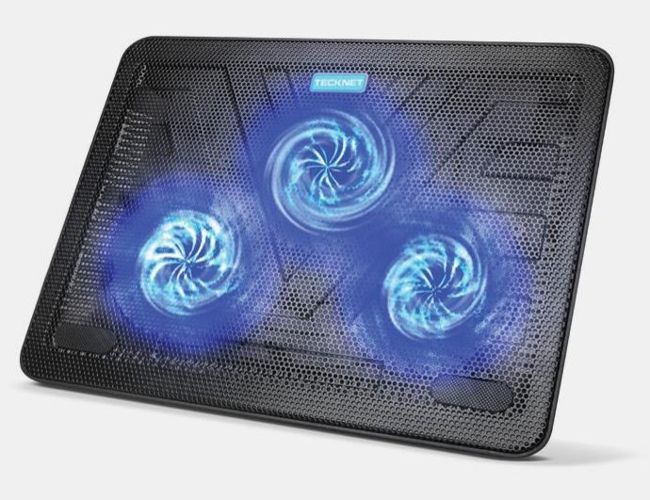Problems Solved
Our experts solve all your tech problems
PROBLEM OF THE FORTNIGHT
Why is my laptop shutting down?
Q
I’ve been trying to use Topaz
Video AI and VideoProc video-editing software, but
my laptop just shuts down after a couple of minutes. It’s a Dell Precision 7710 with an Intel Core i7 6920HQ processor, Radeon 7100 8GB graphics and 64GB of
RAM
running Windows 10 Pro. Should my laptop be able to run these apps? Is there anything I can do to stop it shutting down when I’m trying to use them? As it stands, they’re unusable.
Simon Pordage

A laptop stand like this Tecknet model could help with cooling
A
We had to edit your question
for space reasons, but you also told us that you’d run
benchmarking
tests with Geekbench (www.geekbench.com), and included some performance scores, asking if they’re sufficient to run these apps.
Such numbers, no matter how high, are pretty much irrelevant here. That’s because we believe your laptop’s CPU or GPU, or both, are simply overheating while you’re running these demanding apps. It’s completely normal for a PC to halt or shut down when either of these essential components gets too hot. What’s more, laptops are particularly prone to this, because they often contain parts that, while technically capable of high performance, lack the cooling that would allow them to run at full power for long periods.
So we think this is the root cause of your problem. These demanding programs are causing your Precision 7710 laptop to get too hot very quickly, and it’s shutting down to protect itself.
Incidentally, your laptop’s specifications don’t have the minimum requirements outlined by Topaz at www.snipca. com/52220. Your laptop’s processor is a 2015 model, whereas Topaz Video AI apparently requires one from 2016 or later. As you’ve clearly managed to launch the program, we wouldn’t normally worry too much about this, but it’s worth bearing in mind that even the software developer is suggesting your machine isn’t quite up to the demands of running its program.
That aside, your options are to improve cooling in some way or limit the laptop’s performance. It’s not easy to improve heat dissipation on a laptop, though a fan-laden ‘cooling pad’, such the Tecknet model pictured left (£19 from www.snipca. com/52221) might help a little.
Alternatively, you could intentionally reduce your laptop’s performance. This would obviously slow it down, making your video-rendering tasks take longer, but it should prevent the machine from overheating while you’re using these programs. You can do this using the Power Options box in Settings.
Access it by pressing the Windows key+R to summon the Run box, then typing control powercfg.cpl,,1 (see screenshot 1 ) and press Enter. Scroll down to the ‘Processor power management’ section and click to expand it. Next, click to expand ‘Maximum processor state’, then set the ‘On battery’ and/or ‘Plugged in’ percentages to less than 100 per cent – somewhere around 80 per cent should be enough to prevent overheating 2 . Click OK, then restart your laptop.